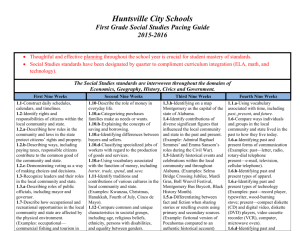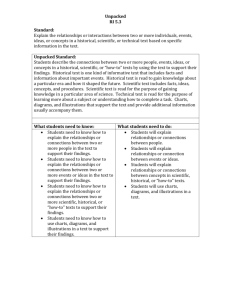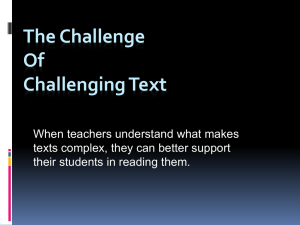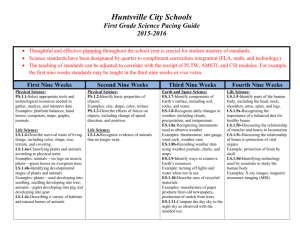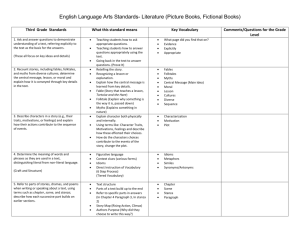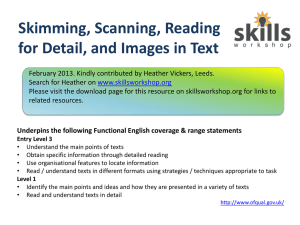- Creative School Services
advertisement
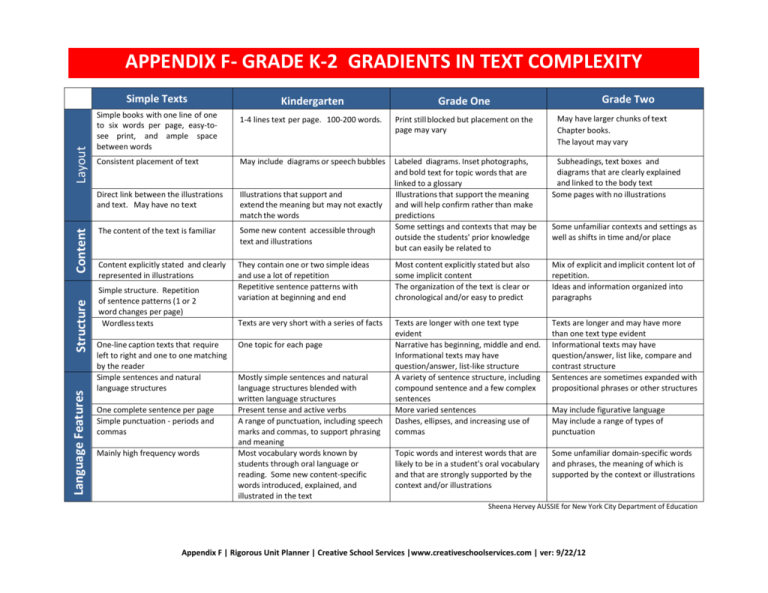
APPENDIX F- GRADE K-2 GRADIENTS IN TEXT COMPLEXITY Language Features Structure Content Layout Simple Texts Grade Two Kindergarten Grade One 1-4 lines text per page. 100-200 words. Print still blocked but placement on the page may vary Consistent placement of text May include diagrams or speech bubbles Direct link between the illustrations and text. May have no text Illustrations that support and extend the meaning but may not exactly match the words The content of the text is familiar Some new content accessible through text and illustrations Content explicitly stated and clearly represented in illustrations They contain one or two simple ideas and use a lot of repetition Repetitive sentence patterns with variation at beginning and end Labeled diagrams. Inset photographs, Subheadings, text boxes and and bold text for topic words that are diagrams that are clearly explained and linked to the body text linked to a glossary Illustrations that support the meaning Some pages with no illustrations and will help confirm rather than make predictions Some settings and contexts that may be Some unfamiliar contexts and settings as outside the students' prior knowledge as shifts in time and/or contexts place and settings as illustratio Some settings and contexts that may be well outside Some unfamiliar but can easily be related to implicit content Most content explicitly stated but also Mix of explicit and implicit content lot of some implicit content repetition. The organization of the text is clear or Ideas and information organized into chronological and/or easy to predict paragraphs Simple books with one line of one to six words per page, easy-tosee print, and ample space between words Simple structure. Repetition of sentence patterns (1 or 2 word changes per page) Wordless texts One-line caption texts that require left to right and one to one matching by the reader Simple sentences and natural language structures One complete sentence per page Simple punctuation - periods and commas Mainly high frequency words Texts are very short with a series of facts One topic for each page Mostly simple sentences and natural language structures blended with written language structures Present tense and active verbs A range of punctuation, including speech marks and commas, to support phrasing and meaning Most vocabulary words known by students through oral language or reading. Some new content-specific words introduced, explained, and illustrated in the text May have larger chunks of text Chapter books. The layout may vary Texts are longer with one text type evident Narrative has beginning, middle and end. Informational texts may have question/answer, list-like structure A variety of sentence structure, including compound sentence and a few complex sentences More varied sentences Dashes, ellipses, and increasing use of commas Texts are longer and may have more than one text type evident Informational texts may have question/answer, list like, compare and contrast structure Sentences are sometimes expanded with propositional phrases or other structures Topic words and interest words that are likely to be in a student's oral vocabulary and that are strongly supported by the context and/or illustrations Some unfamiliar domain-specific words and phrases, the meaning of which is supported by the context or illustrations May include figurative language May include a range of types of punctuation Sheena Hervey AUSSIE for New York City Department of Education Appendix F | Rigorous Unit Planner | Creative School Services |www.creativeschoolservices.com | ver: 9/22/12
